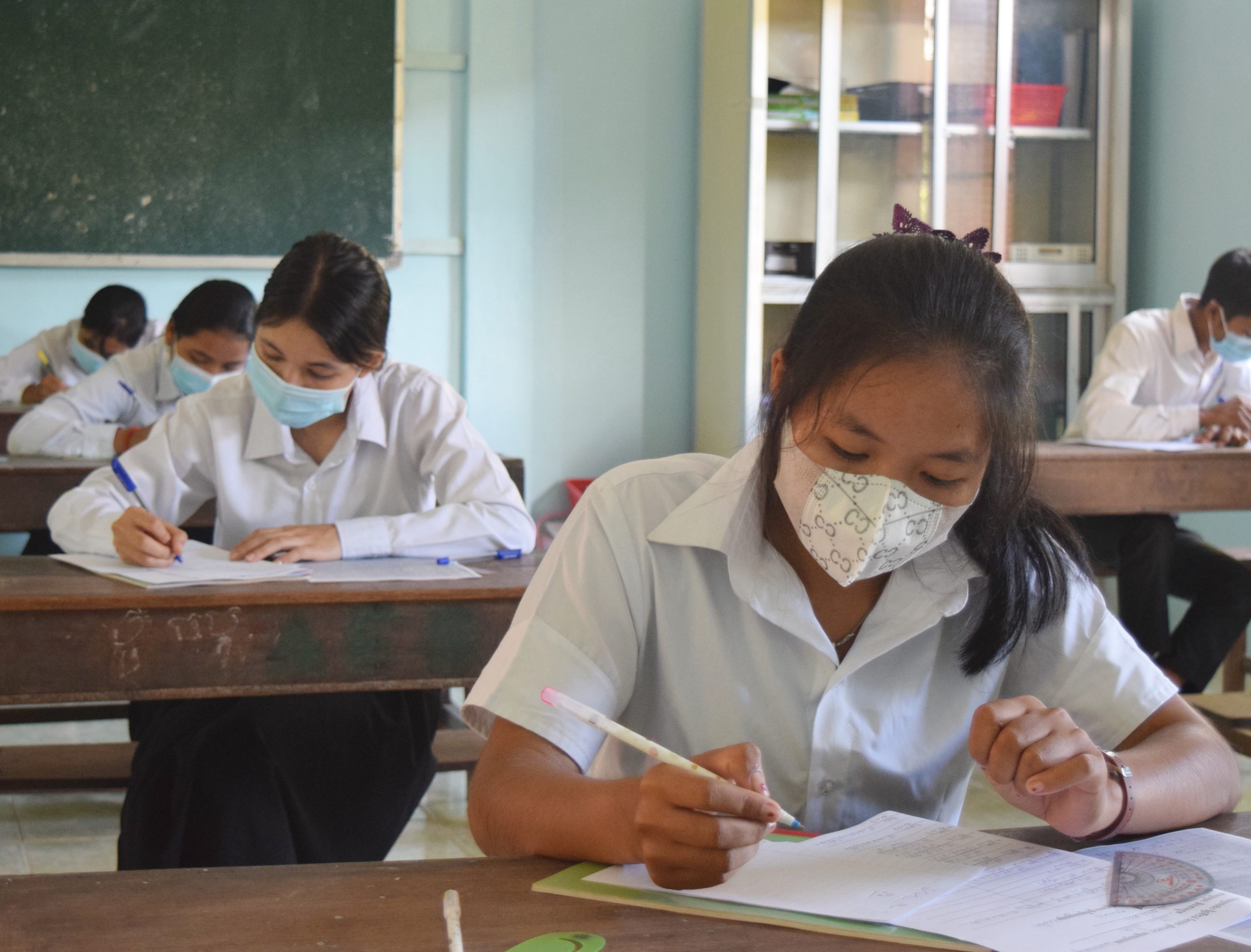
We all know what a disastrous effect Covid had globally – in terms of public health, but on so many other areas of life too. In Cambodia, devastation rampaged across the economy, education system, and the population’s psychological well-being.
Now, we certainly don’t want to tempt fate by proclaiming that ‘IT’ is finally all over, but from a vantage point of two years since the pandemic began, we can report on what that damage has involved for our high-school students. We’ve scrutinized the data from 2021’s Grade 12 exam results, and can walk you through what it reveals; how we managed to offset some of the worst effects and how that informs our strategy moving forward.
Get ready for some serious number crunching!
Graph 1
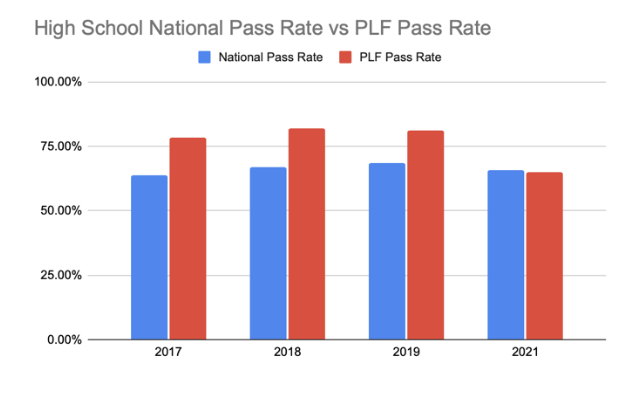
Graph 2
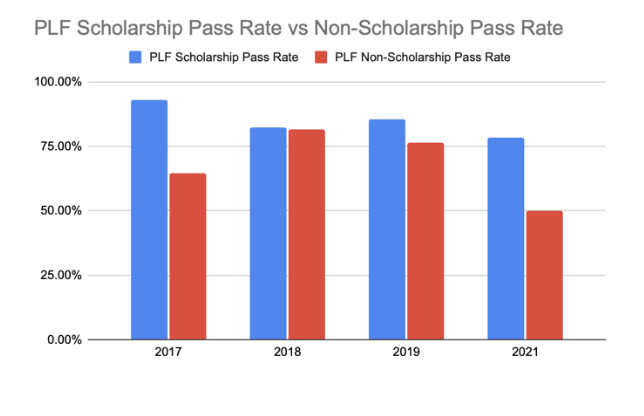
The headline news – that Covid has had a negative effect on all our Grade 12 student groups – will come as a surprise to no one. In Graph 1 you’ll see that we consistently achieved better than the national average – all up until 2021. Meeting the national average for the first time last year illustrates what happens when PLF ‘goes away’ and our students were in the same quagmire as everyone else – meaning that despite our best efforts, we still couldn’t fully reach and support all of them in the same way as we could in pre-covid times.
Graph 2 compares results for our scholarship and non-scholarship groups, which are roughly of equal sizes. 2021 shows the largest gap we’ve seen between those groups since 2017. And while the scholarship group also took a hit during Covid, this was significantly smaller than the non-scholarship group. This is due to our scholars being more engaged, easier to contact, and fully embracing the eLearning and mentorship program that we quickly rolled out as part of their scholarship. They were already the ones more likely to push through barriers and be self-driven.
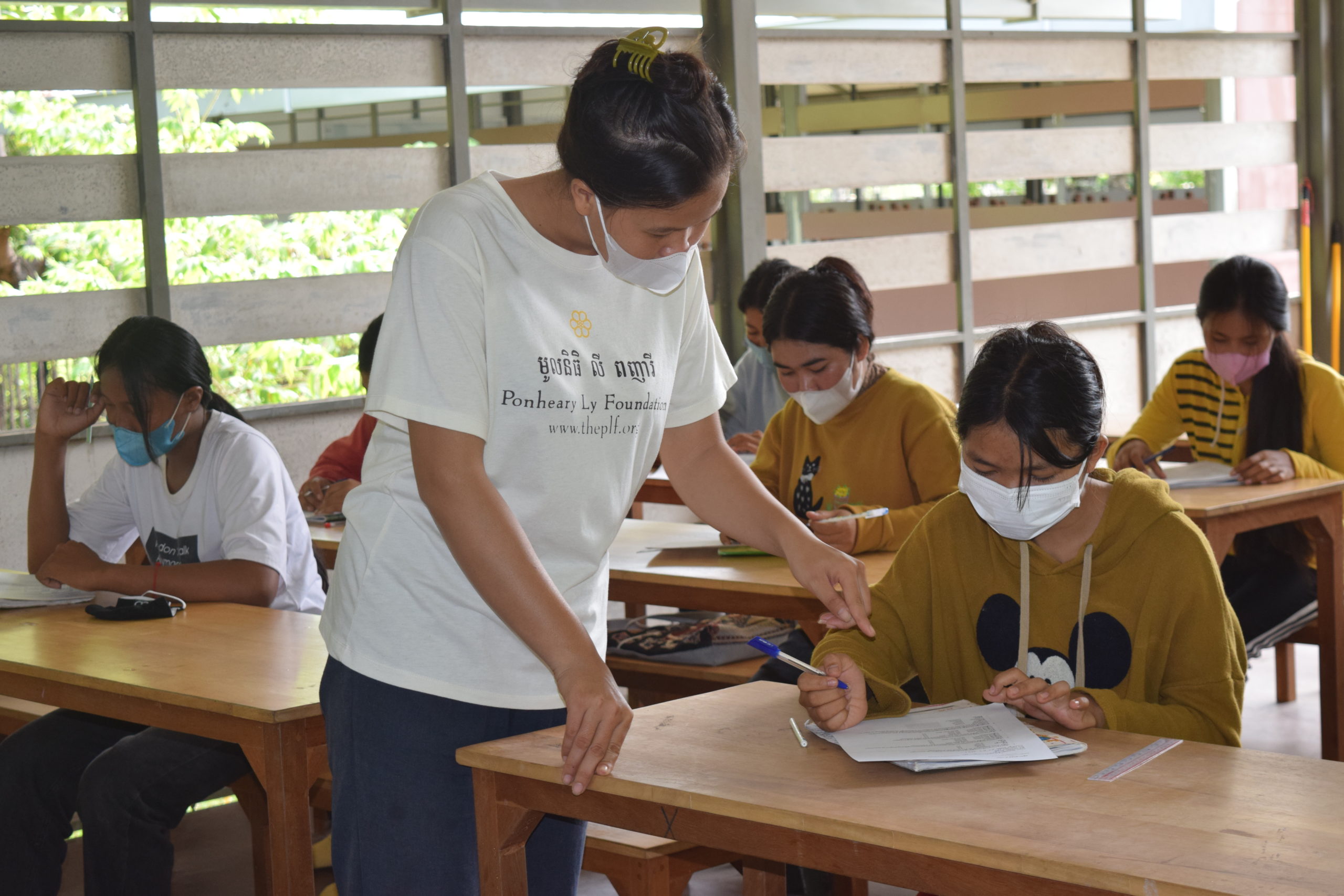
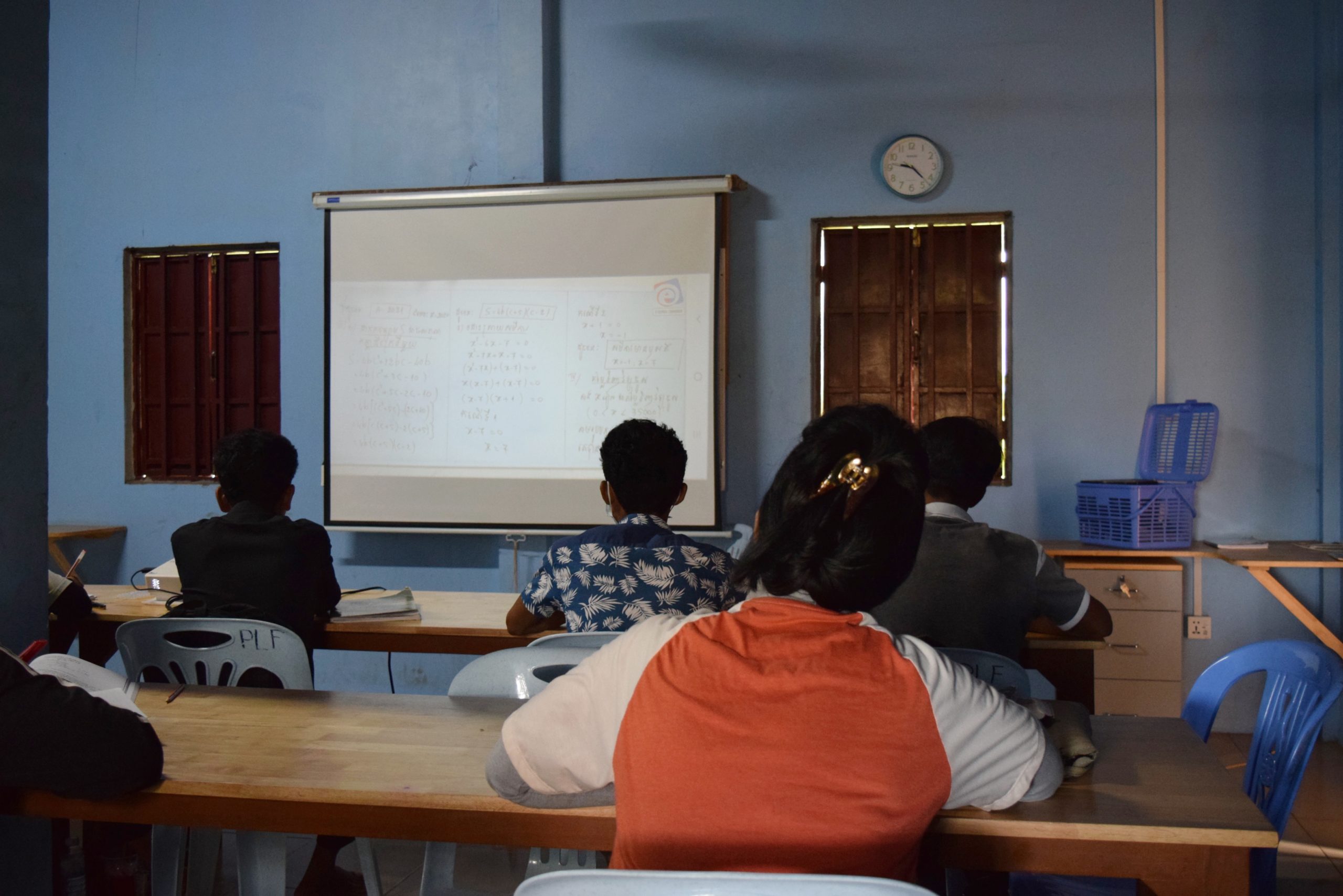
eLearning and mentorship sessions at our learning centers
In contrast, the non-scholarship group would not have been so engaged from the beginning. This was a fairly large group, all of whom did not apply for scholarships, suggesting low levels of engagement and general lack of interest in school. Add the un-reliable online classes offered by public schools (or often the complete lack thereof) and no exam preparation into the mix, and a very large number of them failed.
For both groups, there would have been some serious mental health barriers during this time. Secondary school is a struggle for our students even on a ‘good day’ and the Covid years did not yield many of those for most people. It was just all too defeating for a lot of the students.
Many hands were thrown up in exasperation, and we’ll see the mark this will leave for years to come.
Graph 3
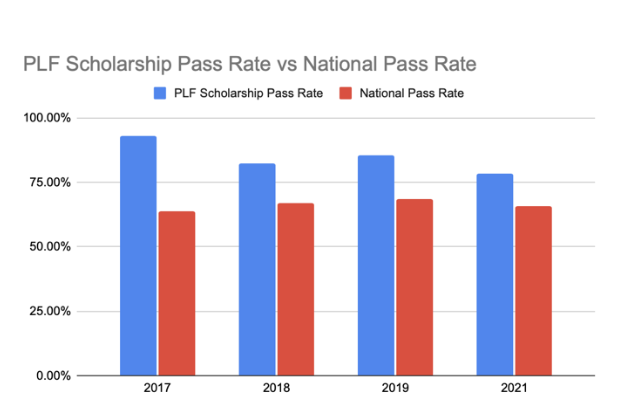
This debilitating factor can also be seen in Graph 3 when looking at how our scholarship group performed against the national average. This was also down on previous years, showing that the cohort was also significantly affected. However, although a closer margin than previously, we can see that they still kept their heads above water, doing better by more than 10%.
Now you might have noticed that, interestingly, the national average pass rates appear to have dipped by only a tiny amount in 2021. This is surprising since ALL Cambodian students would have experienced the same hurdles and lack of learning resources as our non-scholarship students. One explanation could be that we don’t know HOW MANY students in fact took the exam, as this government data hasn’t been released. PLF certainly saw increased dropouts in the higher grades, which might reflect a national trend. This in turn may have naturally weeded out those not likely to pass, thereby retaining a comparatively ‘normal’ looking national average pass rate even despite Covid.
Graphs 2 and 3 show the reality of why we are closer to the national average this year – it’s more to do with how badly our non-scholarship group did. Because with 78.5% of our scholarship group passing and still being above the national average quite comfortably, it was the non-scholarship group that skewed the number.
This shows that our scholarship program really works.
Which is why it’s there in the first place – for those students who are the most engaged. This is another reason we decided to increase our G12 scholarship intake for this year. Because during Covid, many reached out to us who – while maybe not as academically gifted as we normally would accept – showed determination amidst the hardest circumstances, convincing us they deserved the opportunity. We believe a scholarship can make all the difference to kids who have the hunger to succeed.
It will be interesting to see how the current group of Grade 12 students do. Resuming in-person classes in school will likely reveal how far behind they are, but can they catch up? Or will Covid’s effects continue to impact their learning?
One thing we know for sure is that we will continue to support all our students in any way we can. With the ongoing scale-up of our urban program via our new Urban Learning Center, and by honing and improving eLearning to reach a larger number of students than before, we continue to build upon and explore new ways of offering students the opportunities they need to succeed.
Data buffs please read on for further interesting insights!:
Graph 4
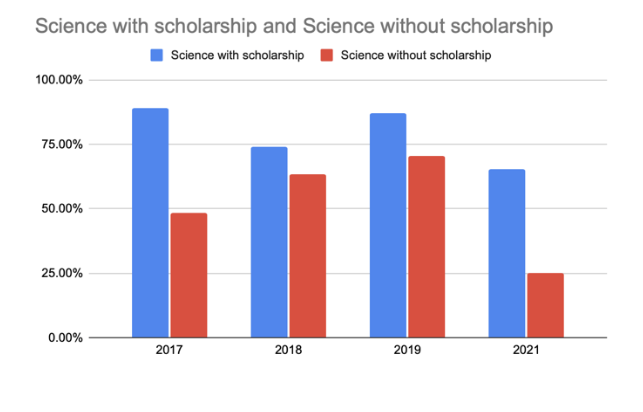
Graph 5
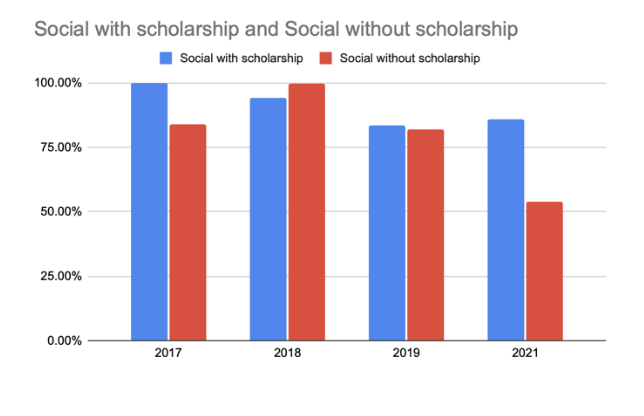
Graphs 4 & 5 look at the results across the different subject groups, and reinforce the fact that our scholarships work. Grade 12 students in Cambodia have the choice between two tracks – science or social studies – which prepares them for the relevant university degree. The science track is widely considered more advanced, and normally the route that brighter students select. It is therefore harder for a student to ‘bluff’ their way through – they either know the material or they don’t. Our science scholars normally receive extra classes in all the five subjects involved: biology, physics, chemistry as well as Khmer language and maths. Because of how the government school system is set up, these extra classes contain key parts of the curriculum that are not covered during regular classes, and are essential to passing the grade. During Covid, only a fraction of those extra classes were available by Zoom, meaning that our scholarship students definitely took a hit. But sadly in comparison, our non-scholarship students nearly fell right off the graph, with no access to any additional resources.
For social track students, it is usually fairly close between the two groups. Before Covid, non-scholarship students could still get through with application and determination, since the history and geography subjects can be more easily learned via reading and self-study. This means we only provide extra classes for the Khmer language and maths elements to scholarship students, who actually did better in 2021 than 2019. However, sadly the non-scholarship students again suffered without daily access to school.
Graph 6
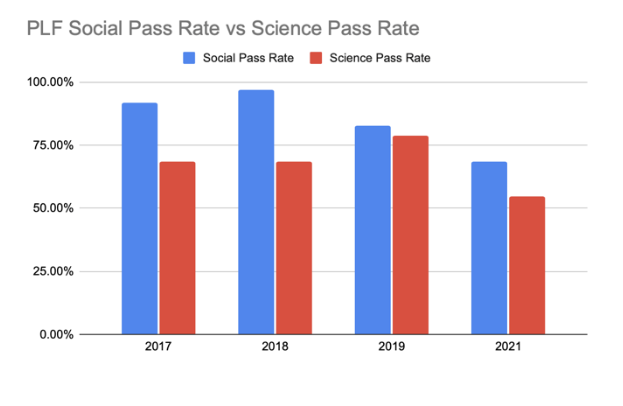
Graph 6 bears out the observation that the social track is generally an ‘easier’ subject route, with higher pass rates every year. In 2019, we had exceptional high fliers in science, whereas our social cohort was not as strong as in previous years, almost levelling the groups out. In 2021, we suspect that across the country students switched from science to social as they realised they had more of a chance of passing, which in turn could have contributed to the national pass rate remaining quite high.
Graph 7
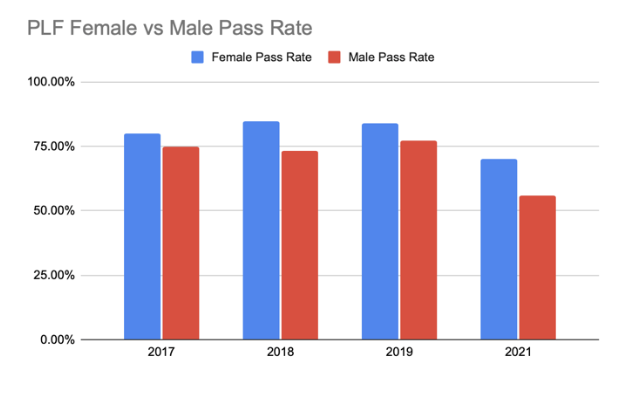
Graph 7 shows a worrying trend which we were making progress in narrowing – the difference in male and female pass rates. Girls have consistently out-performed boys on our program, but the gap widened even further in 2021 – something that we have noted in external data sources at Grade 6 level too, highlighting a nationwide issue. This is most likely down to sheer economics: with families suffering drastic reductions in income, a lot of boys will have been sent out to find jobs. Many will have found work on the huge road and infrastructure project going on in Siem Reap, earning a crucial $5 – $7.50 extra per day to bring home. Whereas families are traditionally happier for girls to stay at home and help around the house – which means they can make the most of whatever online learning is available and apply themselves to self-study.
Narrowing this gender gap back down again is a top priority for us, and we are encouraged to see boys already responding positively to older student mentors. A prime example of this strategy was recently reported to us by Non – one of our high-school graduates – who is running the newly-reinstated book sharing sessions at Srayang Learning Center. Non noticed that since he started leading the sessions, more boys are joining and borrowing library books, as they begin to see the benefits of reading. Getting boys engaged in this way is essential to keeping them in school and staying on track all the way through to passing Grade 12.
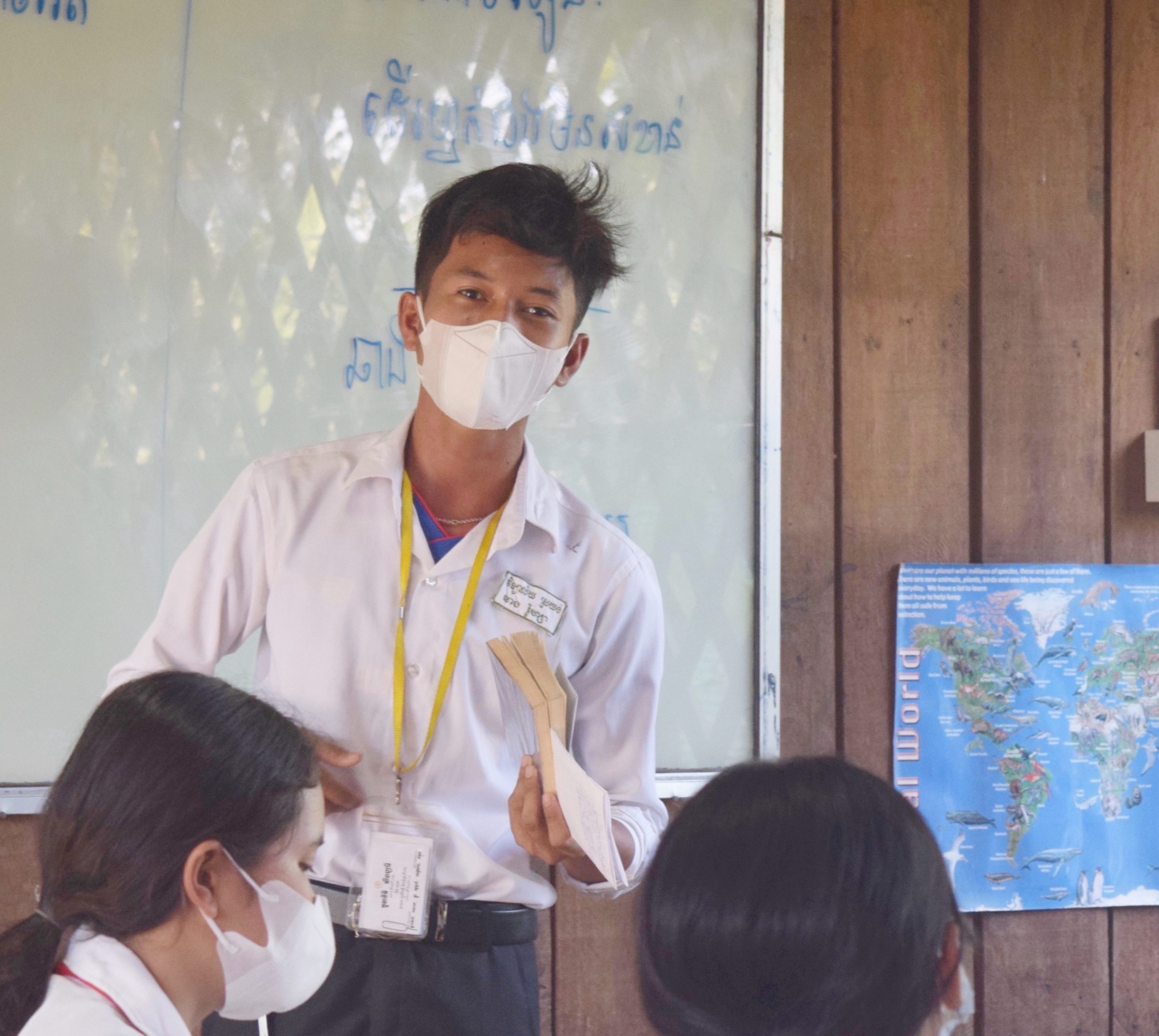
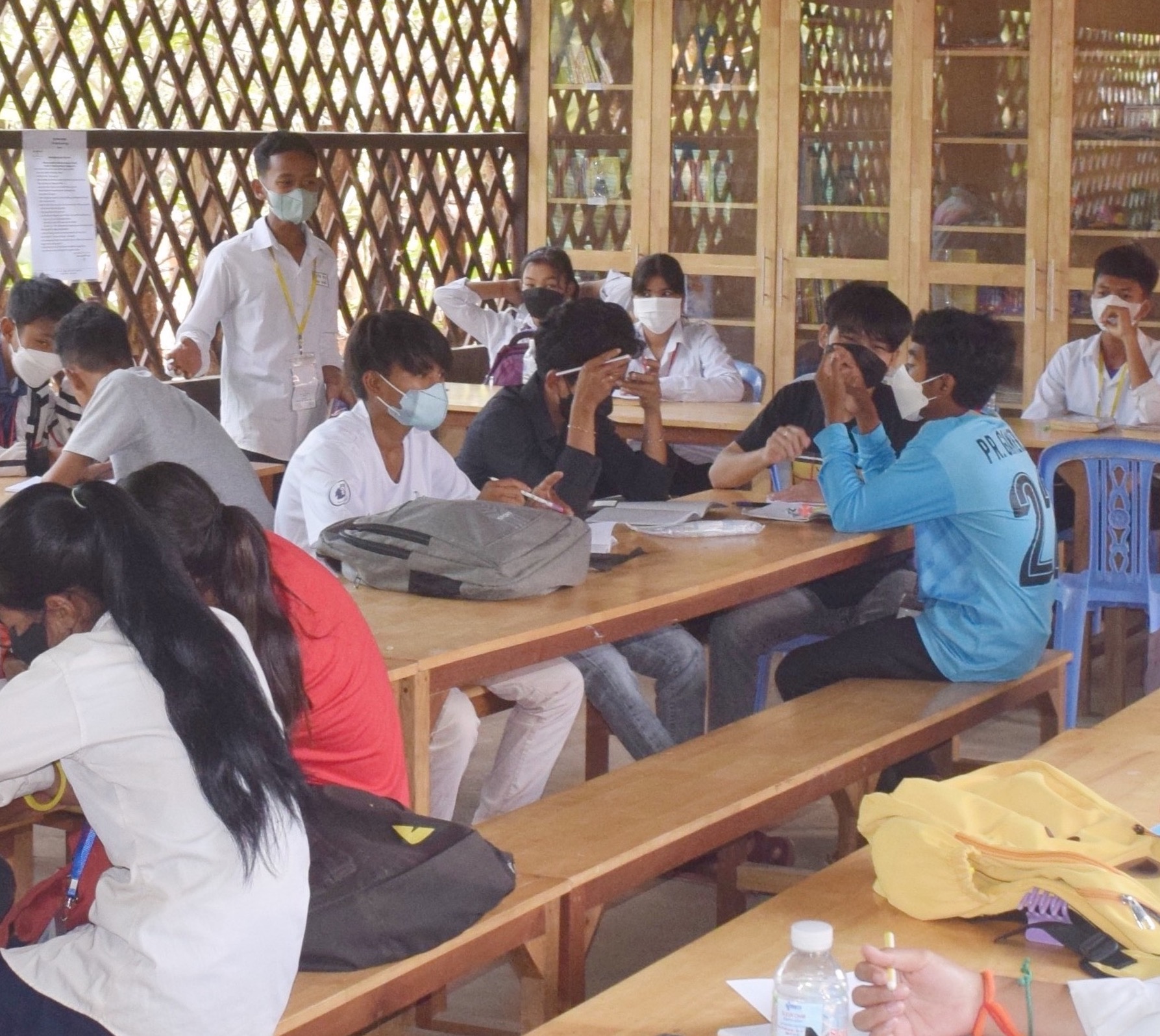
As always, interrogating the data shows us the areas we need to double down on. It’s been two of the most challenging and worrying years for our students and indeed ourselves. We emerge from Covid’s shadow, slightly bruised but stronger for it and focussed on the path ahead.
There’s work to do.
Want to walk alongside our students in their journeys but not sure how? Here are some of the really useful ways you can support our mission!
For as little as $10 a month, you could contribute to the ongoing education of our students. $120 goes a long way in Cambodia: that’s 5 village children on the road to education, with access to school and clean drinking water for half a year. Or a million other things, all of which coalesce into the tools needed for life to change for the better!
Follow our Instagram or Facebook accounts. Like, comment on or share our posts - Do it. It’s free. And it’s a huge help for us!
Have some questions?
Email us for a chat at [email protected]

Recent Comments